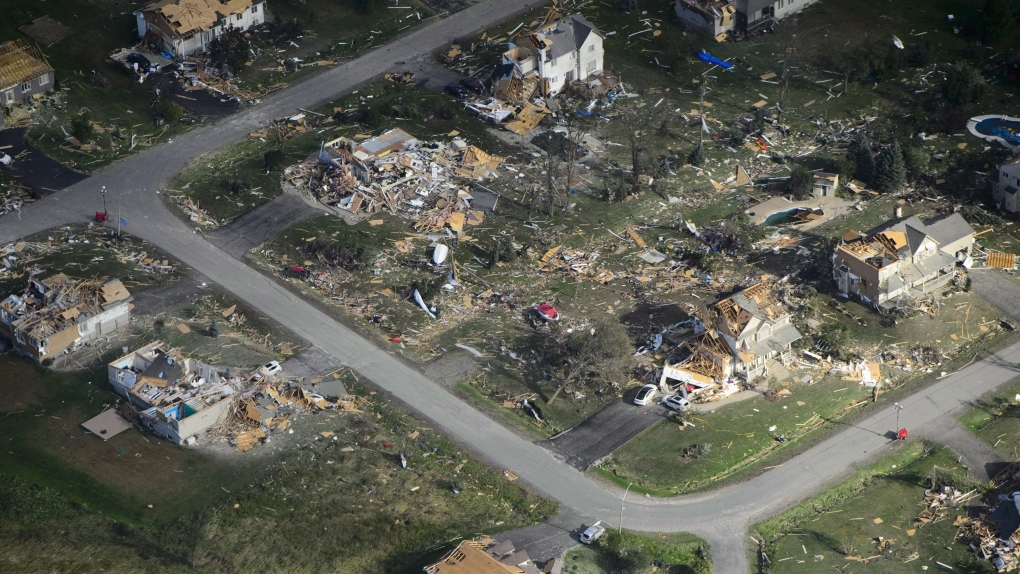Author: Émilie Girard Ruel, Director, Public and Corporate Affairs
Throughout the world, climate change is causing cities to rethink the way they prepare for the future.
At the Urbanism Lab in January, three experts discussed how cities are using climate forecasting to become more resilient:
- Ewa Jackson, Managing Director, ICLEI Canada
- Dr. Pierre Gosselin, Medical consultant, Climate and Health, Institut national de santé publique du Québec (INSPQ), and the Ouranos Health Program
- Dan Sandink, Director of Research, Institute for Catastrophic Loss Reduction (ICLR)
A battle on many fronts

Cities are engaged in a battle against climate change on many fronts. They are attacking both the causes of climate change (mitigation) and the effects (adaptation). We don’t have a choice: the climate is changing, and we have to rethink the ways that we design, build and live in our cities.
“We’re locked in to a certain amount of climate change, a certain amount of warming and a certain amount of risk.” —Ewa Jackson
Here are few ways that cities, organizations and businesses are adapting to climate change:
Adapting to heat
Cooler green spaces
The city of Windsor studied the effects of heat islands in its area. The study indicated that the city’s green spaces, which should have been “cooler,” became warm during summer heat waves.
Infrared images revealed that the rubber surfacing used in playgrounds reached temperatures as high as 76°C, creating a safety risk for the children playing there.
The city has adapted by developing immediate solutions, such as installing awnings to create shade. It has also proposed long-term solutions, such as replacing material and planting trees that would eventually provide shade over the playground.

Less asphalt, more vegetation
In Montréal, the Bûcherons de l’asphalte campaign is a local project implemented by Interventions locales en environnement et aménagement urbain (ILEAU) which aims to replace asphalt with vegetation.
Based on community involvement, the campaign is helping to cool heat islands around the city.
(Video available in French only)
Adapting to precipitation
Better stormwater management
In Mississauga, the IMAX Corporation is collaborating with the Credit Valley Conservation Authority and other innovative companies to address stormwater issues at its headquarters. The parking lot was rehabilitated to incorporate a variety of innovative stormwater management technologies, such as permeable pavers, bioretention areas and water treatment systems.
The parking lot now collects, absorbs and filters pollutants from rain and stormwater runoff before it flows into Sheridan Creek. This creek flows to a provincially significant wetland and eventually to Lake Ontario.
Adapting to severe wind
Making houses more resistant to severe wind
In Canada, severe winds contribute to the majority of natural disasters recorded by the Insurance Bureau of Canada. The ICLR has conducted in-depth research on the main vulnerable points on residential buildings when exposed to extreme wind events.

Laboratory tests concluded that small modifications in the construction of new homes would make roofs more solid and resistant to EF2-rated tornadoes. In Canada, 90 percent of tornadoes are EF2 or less. The estimated cost of these modifications is about $150 to $200, and involves one or two hours’ more work per house.
The ICLR and Doug Tarry Homes Ltd have teamed up for a pilot project to apply measures recommended by the ICLR on about 100 new homes in St. Thomas, Ontario. The project will collect new information about builders’ experiences, and provide useful practical information for the building sector across Canada.
And the National Capital Region?
The National Capital Region will also be affected by climate change: precipitation, heat waves, fewer days with temperatures below zero.
At the NCC, we are working on a report on climate projections for the National Capital Region. This report will help us to assess the risks linked to the effects of climate change on the NCC’s assets, programs and services, and to develop a plan for resilience and adaptation to climate change.
During their presentations, our guest experts provided other examples, and discussed several concepts in greater detail. If you missed this Urbanism Lab event, you can watch it here. 👇